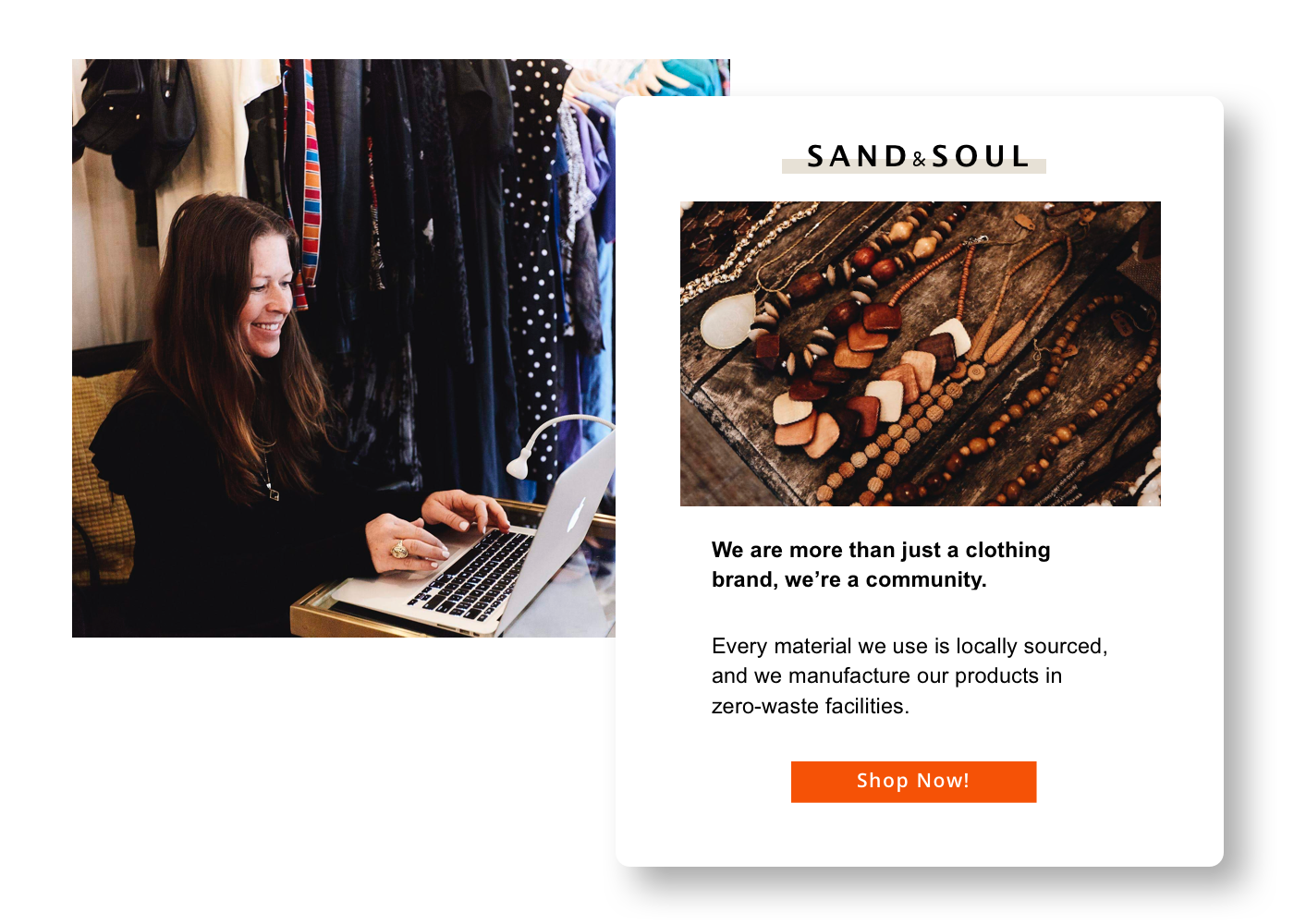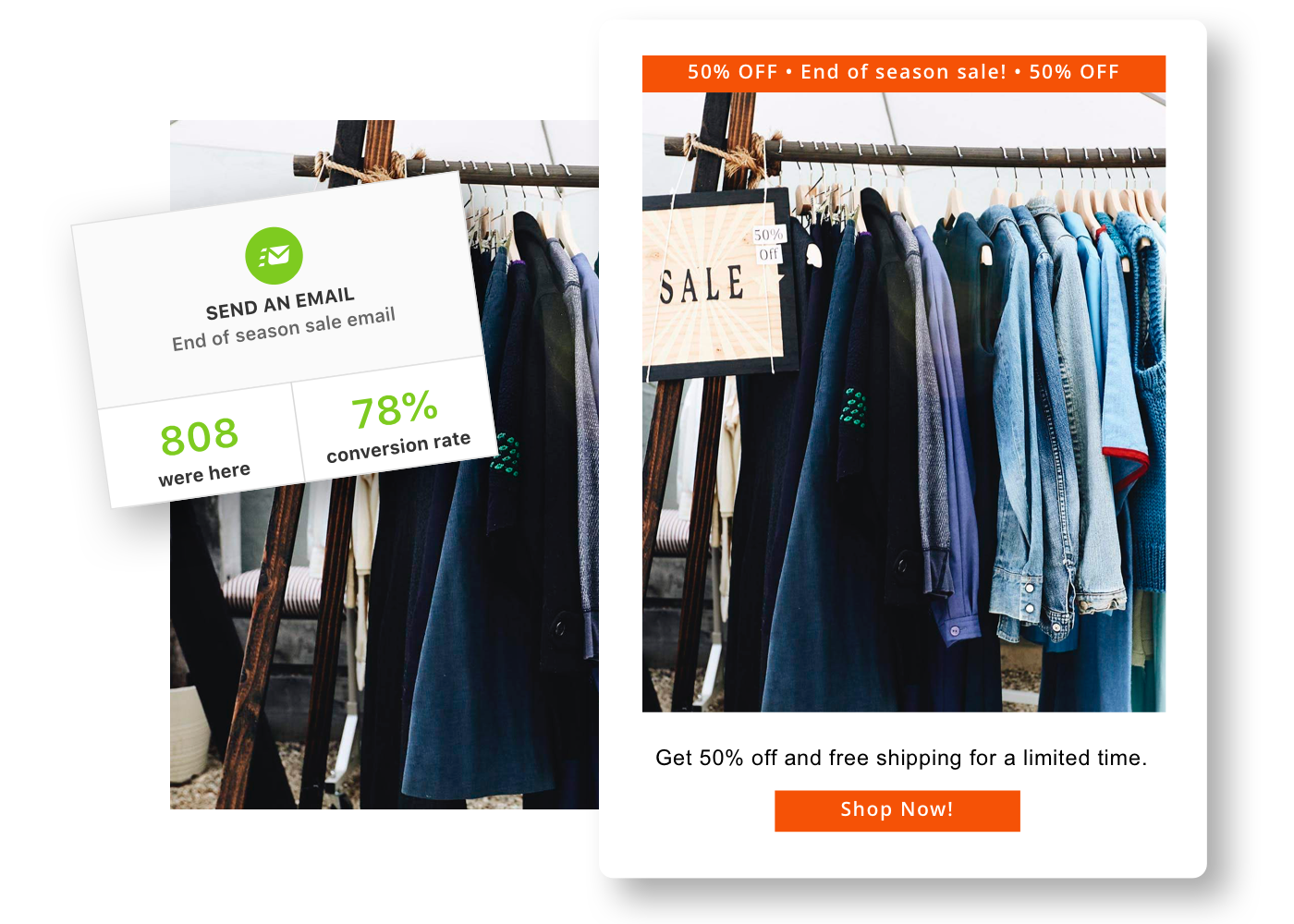It’s important to include a variety of emails in your marketing funnels that keep your customers constantly engaged. While the specific types of emails you send will depend on how you market and interact with your list, here’s a helpful model to consider:

Whether you already have a system in place that automates your email marketing or are just starting out, here are 13 emails to add to your marketing funnels that will help engage and nurture all of your leads.
Emails to Send After Initial Opt-in
Getting a subscriber to opt in to your list is no easy task. With nearly two billion sites on the web, leads have a lot of options and the number is only growing.
So, when people find your site, spend enough time on it to stumble onto an opt-in opportunity, and are interested enough to give their email address, you should take the time to follow up with them. Here are a few ideas:
Email #1: The Customers’ Challenges and Wants
The more you understand your leads’ and customers’ needs, the better your business will be able to cater to them. Immediately after opt-in, send an email asking readers what their biggest challenges and wants are related to your business.
Want to get straight to the point? You can segment your contacts by directly asking which of your products or services they’re most interested in receiving.
Email #2: Introduce Your Company
Is there something special about your business that makes it a better choice than your competitors? If a portion of your profits go towards a charity, your products are responsibly sourced, or you personally hand-make each item, this is the place to say it.

Email #3: Content Follow-up
You spend hours on your content, and people who download it have a specific reason for doing so. If you receive email addresses through a content download, ask them what they thought about it. This not only keeps your brand top-of-mind with subscribers, but prompts them to engage with your brand and start a conversation.
Email #4: Overcome Objections With an Educational Drip Campaign
Your prospects have a surprisingly small number of predictable sales objections. Here’s a pro tip: Collect common objections and come up with a response for each. Translate those objections and responses into educational emails. These emails anticipate your prospects’ thought process and deliver information to them.
Here are a few common objections that might apply to your business:
- Price: Why is your price so high/low?
- Credibility: Why should a prospect choose your company?
- Fit: Is your solution right for the prospect?
- Timing: Should the prospect wait a while before purchasing?
- Authority: Do others need to be involved in the decision?
Emails to Send After Purchase
An ideal outcome for your business is gaining repeat customers and referrals. A great way to do this is by creating experiences that wow every customer.
Email #5: Thank You/Delivery Email
Immediately after customers purchase from you, send an email thanking them for their business, but don’t stop there. Let them know what will happen next and what their purchase means to you.
Walk them through your fulfillment process so they know exactly what to expect. Tell them how to contact you if they have a problem. If you do a great job in this step, they’re unlikely to require any support.
If you have a digital product or service, this would also act as your product delivery email. For example, if you’re a digital personal trainer and a customer just purchased one of your video courses, this email will contain the download link or login to their new course.
Email #6: Receipt Email
The receipt email should be separate from the thank you email and easily searchable. That means you should add the word “receipt” to the subject line of the email to make it easier to retrieve later. You can also upsell, cross-sell or tell customers more about your company right on the receipt.
Email #7: Satisfaction Survey
There’s no better way to improve your customer service and marketing than asking your customers about their experience with you. A few days after purchase, send an email asking for feedback through a survey.

This will do two things: show that you’re serious about customer service and allow you to collect valuable feedback about your fulfillment process. If you’d like to take it a step further, ask for a referral from people who rate you highly, and contact the people who had a negative experience to find out how you can improve.
Email #8: Referral Request
You should always ask for referrals. Focus on the people who had a good experience with you.
When requesting referrals from your existing customers, consider including the following persuasive elements:
- Remind customers of the positive experience(s) they have had with your brand.
- Add an incentive for successful referrals, such as a cash prize or a discount on future purchases.
- Emphasize the benefits of your products and services.
Emails to Increase Customer Lifetime Value
Your job isn’t complete once a customer has purchased from you. In fact, your relationship with them is only beginning. Here’s how you can use upsell, cross-sell and discount emails to continue nurturing your customers over time:
Email #9: Upsell Email
An upsell is selling a higher-level version of the same product, a package containing the product and related items, or another related product that’s more of an investment. If you have a good-better-best product line (a basic product without all of the features and a version or two with more or better features), the upsell email is a natural fit for your business.
To showcase your product tiers, consider sending an upsell email enticing your customer to buy the enhanced, upgraded version of what they’ve already bought.
Email #10: Cross-sell Email
A cross-sell is suggesting products related to a purchase. For example, if you buy a camera you might need a memory card. If you buy a new television, you might need a warranty.
If you have an ecommerce business, this is an absolute no-brainer. Whatever you’re selling, identify related products, and be sure to tell your customers about them.
Email #11: Discount Emails
According to Forbes, “It can cost five times more to attract a new customer than it does to retain an existing one.” So, once you have a customer, giving discounts to incentivize another purchase is worth the investment.
A few discount ideas include:
- Bulk discount (i.e., buy one get one)
- Free shipping
- Limited-time sale
Email #12: Seasonal and Date-Specific Emails
Seasonal and date-specific offers are a great way to use the calendar to increase customer value. There are four main ways you can use seasonal offers.
- Your product or service is seasonal, such as letters from Santa Claus or board shorts.
- You give seasonal discounts for national or shopping holidays such as President’s Day or Black Friday.
- You recognize your customers’ life events such as birthdays or anniversaries.
- You recognize your own milestones such as time in business or the number of followers you have on social media.
The important point is that seasonal and date-specific offers are predictable and repeatable.

Deliver Ongoing Value
Regardless of where people are in the customer lifecycle — a prospect, a new buyer, a loyal customer or a cold lead — they can benefit from some piece of content you create.
When you create a good piece of content, it drives value for people all across your funnel.
Email #13: New Content Notification
When you have new content, share it. If you have segments who receive different pieces of content, email them what makes the most sense for their interests. Here are a few examples of content you can share:
- Blog post
- Guest post
- Curated content (i.e., best articles read during the week)
- Upcoming webinar
- Videos
- Courses
These emails are typically considered “broadcast” emails because they have such broad appeal. As a best practice, send at least one broadcast email every month.
